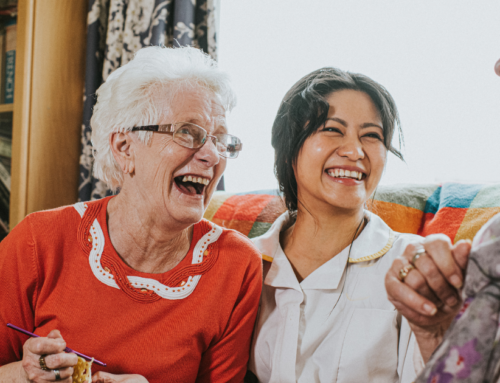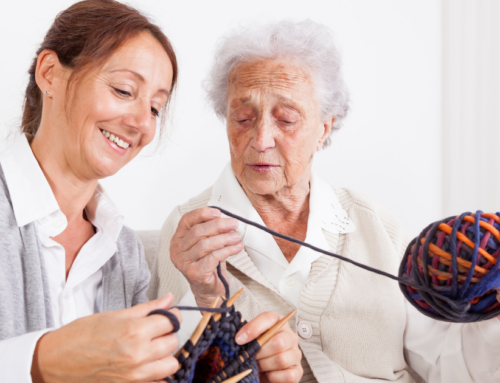Creative activities can stimulate memory, alertness, social interaction and imagination in those living with dementia. The research on music and dementia shows that music can shift mood, help manage stress and agitation, stimulate positive interactions, and facilitate cognitive function. Recent studies show that the visual arts, including looking at art and painting or drawing, works the same way and many art museums, including Seattle’s Frye Art Museum, have launched visual art programs to serve people with dementia, their caregivers and family members.
In 2007, New York’s Museum of Modern Art (MoMA) was among the first to make their museum available to those with dementia and their care partners. The MoMA offers art-making classes and “Meet Me at MoMA,” a monthly interactive gallery-discussion program. A 2007-2014 study found that MoMa’s program provided a positive shared experience between caregiver and client or family member, a chance to participate in a “normal” social activity, an accepting environment and non-judgmental staff who cared about the participant’s ideas and opinions.
Partnering with cultural institutions to develop programs that improve the quality of life for those with dementia has become a priority of the Alzheimer’s Association. Peter Reed, former Senior Director of Programs at the Alzheimer’s Association national office says, “There is a need for programs that are not necessarily therapeutic but that engage people socially and give them an outlet; programs that give them an opportunity to express themselves, to connect with others who are going through a similar experience, and to maintain meaning and dignity in their lives. It is really very important, and it’s something that people with early-stage Alzheimer’s disease are telling us they really need and want, and there aren’t a lot of programs around the country that enable them to remain active in that way.”
According to Jed Levine, Executive V.P. and Director of Programs at the N.Y. Alzheimer’s Association, “We are not solely cognitive beings but have social, creative, and emotional sides that can be nurtured through programs. No one is claiming that museum programs delay progression of the disease, but they do improve quality of life and may have an impact on depression and isolation.”
Seattle’s Frye Art Museum describes their program, here:now, as “an arts-engagement program for individuals living with dementia and their care partners to enjoy a creative and relaxing afternoon together.” here:now offers a monthly gallery tour and discussion, plus a six session art-making class. Each session ends with snacks and socializing. In the February 19, 2013 issue of SPARK, the online magazine of Humanities Washington, the reporter wrote that one of the benefits of here:now is that “It allows participants to put aside their conditions and connect around art and discussion.” The article goes on to quote a participating caregiver as saying, “I love this time when there is nothing to do but think about a painting and create art. I can’t tell you how great it is to see the Alzheimer’s to-do list take a back seat to art!’“
photo credit: Street Artist coloured canvas via photopin (license)





